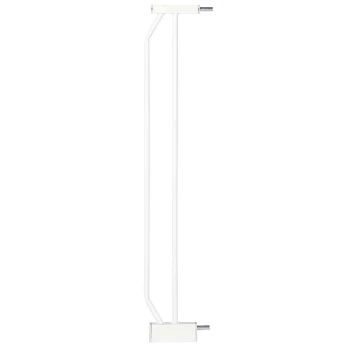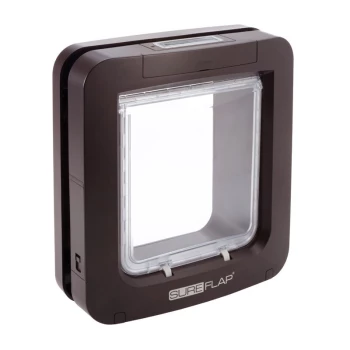Dog flaps & dog grilles
Dog flaps & dog gates in the Maxi Zoo online shop
Dog flap door – free access for your four legged friend
Cat owners know: when you let the cat out, they will want come back in. And vice versa. There’s only one solution if you don’t want to have to keep getting up: a cat flap, a mini door in the front or back door. However, this is not exclusively reserved for cats. A dog flap is also a practical solution for dogs who have access to an outside area. This allows your pet to decide for themselves whether they want to go out to the garden or yard without you having to act as a door opener.
How do you install a dog door?
A dog flap is comprised of a frame and a horizontal door element. These hinged doors are made of robust or flexible plastic as well as seals with magnets or mechanical latches. On some models the entry direction can be adjusted as required, for example so that the dog can always go in but not out alone.
Depending on the model, the flaps can be installed in walls and doors made of wood, plastic or metal. Some dog doors are even suitable for glass doors, to access a terrace, for example. For installation, an appropriately measured opening must be cut into the door. If in doubt, consult a carpenter or glazier. Installation in a glass door is also only possible up to a certain size. For very thick walls or doors, there are special accessories for the dog door, so-called tunnel extensions, which can be used to extend the area between the entrance and exit by several centimetres.
Caution: During installation, ensure that door handles and safety latches cannot be reached by hand from the outside by unwanted human “visitors”!
How does a dog flap work?
The principle of a dog door in a human door is very simple: the dog pushes the door element of the flap forward with its head. For purely mechanical flaps, magnets ensure that the animal can easily open them, but the flap remains closed when not in use.
If you buy a dog flap, there is a large selection of products, from simple flaps that do not require any other functions to specially insulated models that do not let too much cold into the house in winter. Microchip-controlled flaps have sophisticated programs available: a system consisting of a flap with a sensor and a chip ensures that the flap detects certain dogs and only unlocks when the respective animal approaches. This prevents unauthorised dogs, neighbouring cats or wild animals such as raccoons from gaining access to the house. The entrance and exit times or the direction of access can also be set for some models – for example, so that the dog can enter the house up to a certain time, but cannot leave it afterwards. The required chip is either worn on the collar or the one already present in chipped animals is detected.
Dog gates
In many households a gate is also essential for dogs. Especially in the case of puppies who are discovering the world, it can be useful to block certain areas – for example the kitchen, the workroom or the staircase.
Since a dog gate is clearly visible in a home, it makes sense to select a version that matches the furnishing style. For example, there are models in certain colours or made of wood. The features are also relevant. Some models offer certain extras, such as a coloured display, which shows whether the gate is locked or open. It also makes sense to take a look at the fastening method before purchasing. Many models can be built without drilling holes.

